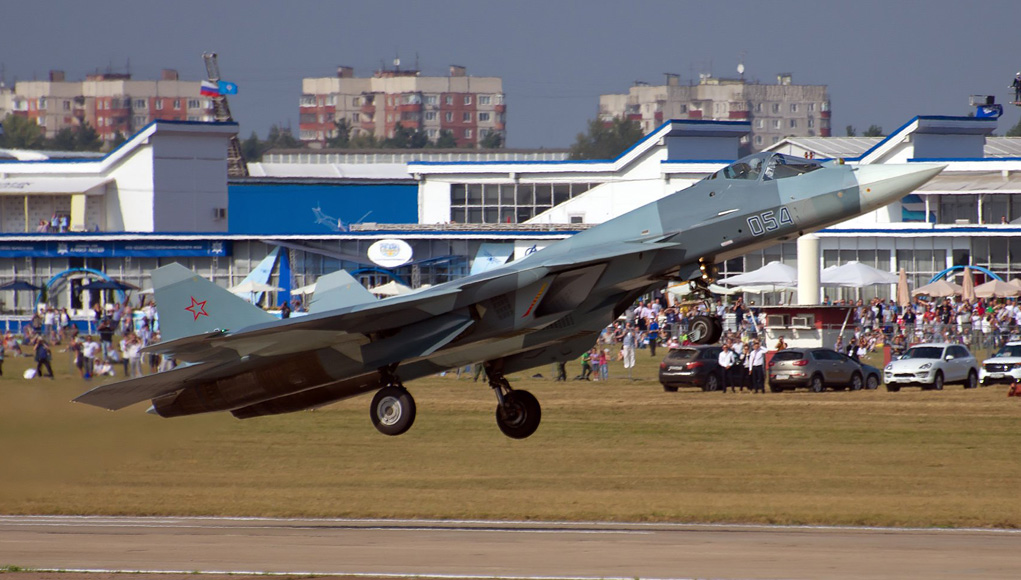The T-50 Demonstrates its Full Potential
The Russian designers were determined to show the T-50 superiority at MAKS 2015, taking PAKFA to its limits, through a breathtaking aerial display showing the full repertoire previously displayed by the Su-27/30 plus some more. Evidently, more confidence has been gained with the progress of the T-50 flight-testing.
Among the new stunts were flat spins, enabling the pilot to turn the aircraft 360 degrees during flight, maintaining full control and minimal loss of altitude. In fact, this maneuver, performed with the extremely high lift generated by the T-50’s huge wing surface, was later demonstrated by the Su-30.
On its demonstration flight the T-50 also performed controlled flight at very high angles of attack, practically ‘standing on its tail’ without tail sliding, as previously performed on other types. Another maneuver was the “bell” – a dynamic high-alpha deceleration followed by a near-flat, very-low-speed 180-deg. turn, reversing the fighter’s course – a creative twist of the “Pugachev Kobra” which was the trademark of the Su-27 in the early 2000s.
Besides unprecedented maneuverability, the T-50 will introduce advanced system integration, including distributed sensors and datalink capabilities enabling weapon delivery in traditional “Fire and Forget’ as well as “Lock-on After Launch” (LOAL) beyond line of sight modes, enabling the new stealth fighter to employ weapons from its internal carriage.
This capability is essential for the fighter’s stealth capability, enabling the T-50 to carry four missiles in its two internal weapons bays. Some of these weapons, including the X-59MK2, the X-58USHKE/IIR and guided bombs, were displayed at MAKS 2015 by the Tactical Missiles Corporation. The aircraft is also equipped with a single-barrel 30-mm cannon for ground or air attack.
Some of the modern avionics systems developed for the aircraft include wide-angle Head Up Display (HUD) and advanced Infra-Red Search Track (IRST) systems, extending the range and detection capability of airborne targets. Enabling the aircraft to detect enemy aircraft from long range, while remaining ‘silent’ (without radar emissions), is an important aspect of its low detectability signature. Such new generation IRST systems were displayed at MAKS 2015 by YOM and Russia’s Conglomerate Radio-Electronic Technologies (KRET).
While the T-50 is not as advanced as the U.S. or European fighters, the combination of stealth, advanced sensors, communications and avionics, large weapon selection and superior speed and super maneuverability will position it as a highly capable challenger to all western fighters.
According to estimates, the Russian Air Force is likely to receive its first Su-50s in late 2016 or early 2017, if flight tests and system integration is completed on time. Russia is already offering the T-50 (also known as the Su-50E) as a baseline for the fifth-generation fighter aircraft (FGFA) under a cooperative development program with India. India is expected to field at least 154 FGFAs over the next decade, making it that country’s largest fighter production plan for the 2020s.
















